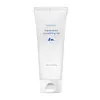What's inside
What's inside
 Key Ingredients
Key Ingredients

 Benefits
Benefits

 Concerns
Concerns

No concerns
 Ingredients Side-by-side
Ingredients Side-by-side

Water
Skin ConditioningGlycerin
HumectantButylene Glycol
Humectant1,2-Hexanediol
Skin ConditioningCarbomer
Emulsion StabilisingPolyglycerin-3
HumectantTromethamine
BufferingEucalyptus Globulus Leaf Extract
PerfumingMentha Arvensis Extract
MaskingAloe Barbadensis Leaf Extract
EmollientCymbopogon Citratus Extract
Skin ConditioningPanthenol
Skin ConditioningEthylhexylglycerin
Skin ConditioningTremella Fuciformis Polysaccharide
Emulsion StabilisingHydrolyzed Hyaluronic Acid
HumectantDisodium EDTA
Sodium Hyaluronate
HumectantErythritol
HumectantWater, Glycerin, Butylene Glycol, 1,2-Hexanediol, Carbomer, Polyglycerin-3, Tromethamine, Eucalyptus Globulus Leaf Extract, Mentha Arvensis Extract, Aloe Barbadensis Leaf Extract, Cymbopogon Citratus Extract, Panthenol, Ethylhexylglycerin, Tremella Fuciformis Polysaccharide, Hydrolyzed Hyaluronic Acid, Disodium EDTA, Sodium Hyaluronate, Erythritol
Water
Skin ConditioningGlycerin
HumectantMyristyl Alcohol
EmollientParaffinum Liquidum
EmollientButylene Glycol
HumectantAlcohol Denat.
AntimicrobialStearic Acid
CleansingPetrolatum
EmollientMyristyl Myristate
EmollientGlyceryl Stearate
EmollientHydrogenated Coco-Glycerides
EmollientDimethicone
EmollientSimmondsia Chinensis Seed Oil
EmollientTocopheryl Acetate
AntioxidantLanolin Alcohol
EmollientPolyglyceryl-2 Caprate
EmulsifyingParfum
MaskingCarbomer
Emulsion StabilisingSodium Hydroxide
BufferingPhenoxyethanol
PreservativeWater, Glycerin, Myristyl Alcohol, Paraffinum Liquidum, Butylene Glycol, Alcohol Denat., Stearic Acid, Petrolatum, Myristyl Myristate, Glyceryl Stearate, Hydrogenated Coco-Glycerides, Dimethicone, Simmondsia Chinensis Seed Oil, Tocopheryl Acetate, Lanolin Alcohol, Polyglyceryl-2 Caprate, Parfum, Carbomer, Sodium Hydroxide, Phenoxyethanol
 Reviews
Reviews

Ingredients Explained
These ingredients are found in both products.
Ingredients higher up in an ingredient list are typically present in a larger amount.
Butylene Glycol (or BG) is used within cosmetic products for a few different reasons:
Overall, Butylene Glycol is a safe and well-rounded ingredient that works well with other ingredients.
Though this ingredient works well with most skin types, some people with sensitive skin may experience a reaction such as allergic rashes, closed comedones, or itchiness.
Learn more about Butylene GlycolCarbomer is a polymer of acrylic acid. Its main role is to create a gel consistency.
A high amount of carbomer can cause pilling or balling up of products. Don't worry, most products contain 1% or less of carbomer.
Glycerin is already naturally found in your skin. It helps moisturize and protect your skin.
A study from 2016 found glycerin to be more effective as a humectant than AHAs and hyaluronic acid.
As a humectant, it helps the skin stay hydrated by pulling moisture to your skin. The low molecular weight of glycerin allows it to pull moisture into the deeper layers of your skin.
Hydrated skin improves your skin barrier; Your skin barrier helps protect against irritants and bacteria.
Glycerin has also been found to have antimicrobial and antiviral properties. Due to these properties, glycerin is often used in wound and burn treatments.
In cosmetics, glycerin is usually derived from plants such as soybean or palm. However, it can also be sourced from animals, such as tallow or animal fat.
This ingredient is organic, colorless, odorless, and non-toxic.
Glycerin is the name for this ingredient in American English. British English uses Glycerol/Glycerine.
Learn more about GlycerinWater. It's the most common cosmetic ingredient of all. You'll usually see it at the top of ingredient lists, meaning that it makes up the largest part of the product.
So why is it so popular? Water most often acts as a solvent - this means that it helps dissolve other ingredients into the formulation.
You'll also recognize water as that liquid we all need to stay alive. If you see this, drink a glass of water. Stay hydrated!
Learn more about Water